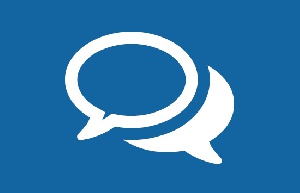Opinions of Tuesday, 31 March 2015
Columnist: David Attricki
Digital Marketing: Enriching Your Online Presence
In the last few years, online marketing has increased exponentially to become an important element in business growth. Businesses need online presence - a website, to thrive in this modern age of business development.
Your website is your shop window, the place where you showcase your brand, products and services.
Building a successful online marketing strategy requires a solid foundation consisting of three unique elements;
Search Engine Marketing
Content Marketing
Social Media Marketing
It is important to understand how these elements impact your website and contribute to business growth. For the purpose of this discussion, I would like to narrow in on Search Engine Marketing SEM and Social Media Marketing. Search Engine Marketing can be considered as the process of gaining traffic and visibility from search engines through both paid and unpaid efforts.
Originally called Search Engine Marketing, the shorter phrase "Search Marketing" is now often used to encompass the terms Search Engine Marketing (SEM) and Search Engine Optimization (SEO).
SEO is used to describe unpaid efforts at earning traffic, whereas SEM is used to describe paid activities employed to get traffic and visibility. Search Engine Marketing employs the terms below:
Paid Search Ads
Pay Per Click (PPC)
Cost Per Click (CPC)
Cost per thousand impressions (CPM)
PPC advertising is great when used in combination with SEO because SEO can inform PPC campaigns with the keywords that are being searched for and are the most likely to convert.
Most adverts are sold on a cost per click or pay per click basis yet some advertising options may also be sold on cost per thousand impressions basis. Regardless of any websites goal, the importance of visitors can not be overlooked, and this is where Search Engine Optimization is key. It is also important to note that in today's modern age of business, people turn to Search Engines for any kind of information.
Search Engine Optimization can therefore said to be a methodology of strategies, techniques and tactics used to increase the amount of visitors to a website by obtaining high ranking placement in the search results page of a search engine including Google, Bing, and Yahoo. The key here is organic results, which is the natural or non-paid results.
The fact is, 95% of searchers click on the first page of search results for Google, Yahoo or Bing. For this reason, search rank is important for directing traffic to a website. Thus, the higher a website naturally ranks in an organic search, the greater the chance of that site getting more visitors.
In the quest to get a higher rank in search engines, it is important to ensure your website is a user-focused site. Being well positioned in the rank however does not mean you will get qualified leads and close the sale. Simply put, you gain nothing from a site that ranks high on search engines but turns off visitors.
Let us turn to Google to discover how our websites are indexed and ranked on www.google.com.
According to Google, Crawling is the process by which "Googlebot" discovers new and updated pages to be added to the Google index.
It involves the use of a huge set of computers to fetch (or "crawl") billions of pages on the web. Googlebot is the programme that does the fetching and it is also known as a robot, bot, or spider. Googlebot uses an algorithmic process: computer programmes determine which sites to crawl, how often, and how many pages to fetch from each site.
Google's crawl process begins with a list of web page URLs, generated from previous crawl processes, and augmented with Sitemap data provided by webmasters. As Googlebot visits each of these websites, it detects links on each page and adds them to its list of pages to crawl. New sites changes to existing sites, and dead links are noted and used to update the Google index.
Google does not accept payment to crawl a site more frequently, and it keeps the search side of our business separate from our revenue-generating AdWords service.
Indexing
Googlebot processes each of the pages it crawls in order to compile a massive index of all the words it sees and their location on each page. In addition, it process information included in key content tags and attributes, such as Title tags and Alternative attributes. Googlebot can process many, but not all, content types.
Serving results
When a user enters a query, Google serves what it believes are the most relevant information to the query. Relevance is determined by over 200 factors, one of which is the PageRank for a given page. PageRank is the measure of the importance of a page based on the incoming links from other pages. In simple terms, each link to a page on your site from another site adds to your site's PageRank. Not all links are equal: Google works hard to improve the user experience by identifying spam links and other practices that negatively impact search results. The best types of links are those that are given based on the quality of your content.
In order for your site to rank well in search results pages, it is important to make sure that Google can crawl and index your site correctly.
Basic Search Engine Optimization Principles
Search engines use complex, secret and ever-changing mathematical algorithms to rank sites. A website built with users in mind is likely to fare well with the software "spiders" that search engines use to index content and rank sites. Some building blocks of such a site include:
Text: Use content that includes keywords and key phrases that your company's target audience is likely to type into search queries. If you are selling mountain bikes, that term should be everywhere in page headings, navigation buttons, photo captions and the like.
Links: A site's navigation scheme should be accessible, coherent and consistent so that "spiders" and humans can easily traverse it.
Performance: How fast the website loads and ease of use User Experience: This takes into consideration how the website looks, the ease with which one can navigate around.
Popularity: A good site will prompt others to link to it. External links from reputable sites will enhance your website's ranking in search engines. Keyword strategy is not only important to implement on-site, but should extend to other off-site platforms, which is why you should also be thinking about multi-channel optimization. These multi-channel platforms include:
Facebook
Twitter
LinkedIn
Email
Being consistent with keyword phrases within these platforms will not only help your branding efforts, but also train users to use the specific phrases you are optimizing for.
In addition to optimizing for the desktop experience, it is essential to focus on mobile and tablet optimization, as well as other media by creating rich media content like video, as it is easier to get a video to rank on the first page than it is to get a plain text page to rank.
It is also important to optimize your non-text content so search engines can see it. If your site uses Flash or PDFs, make sure you read up on the latest best practices so search engines can crawl that content and give your site credit for it.
Social Media Marketing
For businesses, social media is a way to tie SEO and content marketing together. It amplifies your search reach, signifying to search engines that users find your content valuable. Search engines, most importantly Google, rely more on social media to help vet sites. Search engines take into consideration the number of unique shares a page receives when it ranks that particular piece of content.
Sites like Twitter, Google+, and Facebook all allow consumers to share valuable content with others in their network. Research shows that people are more likely to trust content shared from people they know, so a share is akin to a 4 star rating!
A common mistake in social media marketing is thinking a large number of followers is all you need. It is important to note that friends and fans are not enough – it is essential to build engagement.
In order to make the most of a social media marketing strategy, it is important to interact with your fans and create a true community. Show that you are accessible by allowing people to ask questions, voice concerns, and even complain. Then address these issues in a professional manner. Provide interesting content, not just promotional. Remember, social media is first of all social!
In conclusion, it is imperative to always keep Social Media Marketing and SEO in the forefront, and always employ the most appropriate practices for your business. While PPC Ads can complement organic search results, especially when doing seasonal promotions, they are not substitutes.
Skipping the fundamentals of SEO will only leave your website's foundation in a mess preventing you from fully maximizing revenue opportunities.
By: David Attricki
Chief Executive Officer
Mersal Media & Communication













